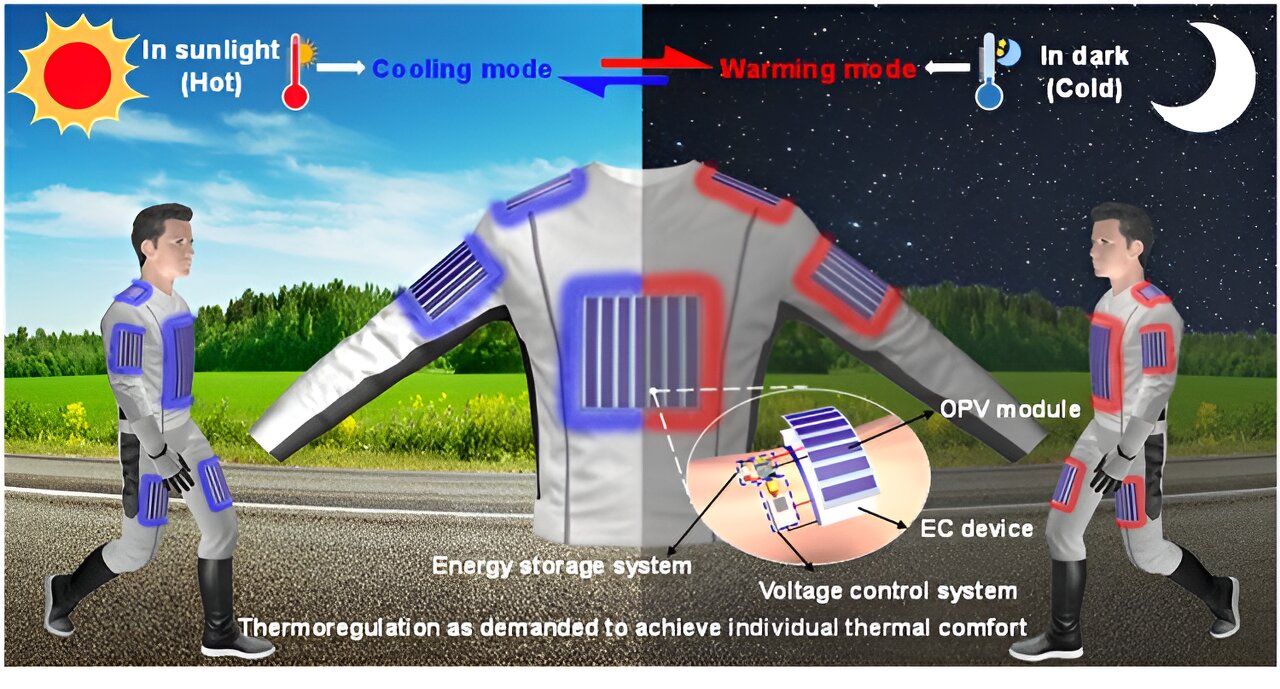
A team of engineers, materials scientists and chemists at Nankai University, in China, has developed a microfiber-based meta-fabric that provides full-day thermoregulation of body temperature during periods of changing external temperatures.
In their paper published in the journal Science, the group describes how they developed their fabrics, how they work and how well they performed when tested. Xingyi Huang and Pengli, both with Shanghai Jiao Tong University, in China, have published a Perspective piece in the same journal issue outlining the work done by the team.
As the researchers note, clothing keeps people warm when it is cold, and in some cases, can help people stay cool in hot temperatures. Prior research efforts have attempted to extend the capabilities of clothing by adding heating or cooling elements, but thus far, most such products have proven to be too bulky for general use.
In this new study, the researchers built on a prior innovation that creating microfiber-based meta-fabrics that could provide daytime radiative cooling. The researchers sought to combine flexible solar cells with electrocaloric technology to create a micro-fiber-based fabric that can be used by people under ordinary circumstances.
At the heart of the new fabric is an organic photovoltaic module combined with a bidirectional electrocaloric device. Because both are flexible, the resulting device can be integrated into fabric used to make clothing. Also, because of its bidirectionality, such clothes can provide heat or a cooling effect depending on the weather. The research team notes that test clothes made with their technology were able to respond quickly to changes in ambient temperature.
Further testing showed that the clothes they made were able to provide a person wearing them 10.1 K of cooling to the skin in a hot environment and 3.2 K of heating when it was cold out. They also found that the clothes were able to maintain skin temperature to a thermal range of 32.0°C and 36.0°C, even as ambient temperatures varied from 12.5°C to 37.6°C. https://techxplore.com/news/2023-12-full-day-solar-powered-bidirectional-thermoregulatory-temperatures.html







Recent Comments